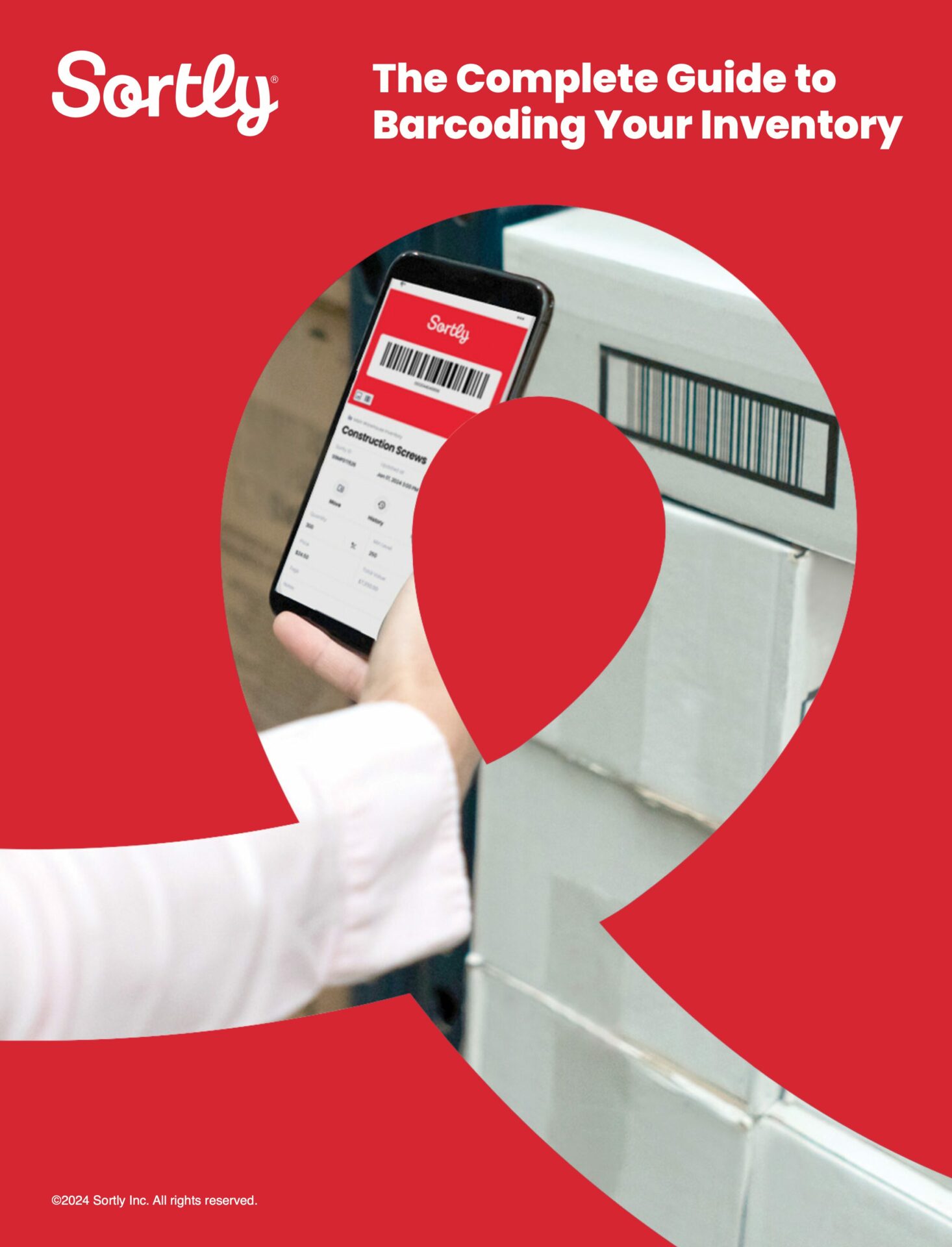Whether your business sells coffee mugs or catalytic converters, chances are that improved SKU management could help your company save time, money, and stress. That’s because SKUs, or stock-keeping units, create a more organized, information-rich, uniform way of managing inventory.
In this article, we’ll dive deep into SKU management, offering several SKU management best practices. We’ll also identify different ways to improve your inventory SKU management strategy.
What is a SKU?
A SKU, or a stock-keeping unit, is a unique, alphanumeric code linked to an item in your business’s inventory. Usually, the code is eight digits—all numbers and letters. These codes are descriptive, data-rich, and, most notably, designed to reflect what’s most important to the business that created them.
Usually, SKUs feature set classifications and categories. For example, if you run a gift shop, you might have different sections of your store: housewares, books, clothing, and greeting cards. When writing SKUs, you’ll likely include references to these meaningful categories, both to better describe each item and to indicate where it might be located in your store.
The same goes for other descriptors, like color, size, and so on. But since eight characters aren’t enough to describe these items with words, your business may create reference codes that are meaningful to your team. Here’s an example of how an IT department might create SKUs:
| Storage Section | Code | Item Type | Code | Item Make | Code | Item Size | Code | SKU |
| Hardware | H1 | Laptop | LP | Dell | DL | 15” | 15 | H1LPDL15 |
| Hardware | H1 | Laptop | LP | Dell | DL | 12” | 12 | H1LPDL12 |
| Hardware | H1 | Docking Station | DS | Logitech | LT | Small | SM | H1DSLTSM |
| Hardware | H1 | Monitor | MT | HP | HP | 25” | 25 | H1MTHP25 |
| Hardware | H1 | Mouse | MS | Logitech | LT | One size | OS | H1MSLTOS |
Once you’ve determined your SKU codes, you’ll want to insert them into an inventory management system. That way, you’ll have tons more information about the product—from value to a high-resolution picture to safety stock threshold—available to access whenever you need it.
What is SKU management?
SKU management helps companies identify, track, and organize their retail inventory using customized, 8-digit alphanumeric codes. SKU management is an essential part of a more extensive inventory management strategy.
If your business only stocks a few dozen items, SKU management might seem like a practice you can skip. But as your company grows—and the stock on your shelves multiplies—you might find it harder and harder to manage all your inventory. And that’s where SKU management comes in.
With top-notch SKU management, your business will easily be able to differentiate products—even if you sell many similar items. You’ll continue to evolve your codified SKU language so that no two products ever carry the same SKU.
And by creating a meaningful SKU management strategy, you’ll find that placing orders, tracking inventory, and even working with third-party suppliers and warehouses becomes more straightforward, less error-prone, and faster.

Free Ebook: The Complete Guide to Barcoding Your Inventory
This easy, comprehensive guide will help you:
- Implement a barcode inventory system for your business
- Generate your own unique barcodes
- Practice perpetual inventory control with barcoding
Three benefits of SKUs
Using SKUs will help your business stay organized and a whole lot more. Here are three benefits you’ll unlock when your company starts managing SKUs.
1. Reduced human error
Many businesses stock items that look and sound alike. And many more companies rely on hard-to-read spreadsheets to keep track of inventory. Together, that’s a recipe for confusion on inventory lists. To combat avoidable mistakes, your business should do two things: use SKU codes and upgrade to a digital inventory management system. That way, you’ll have multiple guardrails in place should an employee make a mistake.
Even if, somehow, an SKU code is entered incorrectly into an inventory app, your app will show you details and photos of the item, revealing the mistake before it’s too late. What’s more, you can link a barcode or a QR code to the item and its SKU, ensuring there’s no room for error during year-end inventory counts or audits.
2. Less inventory shrinkage
Inventory shrinkage happens when actual inventory levels are less than what’s recorded on inventory records. This can happen for various reasons, but the most common culprits are human error, damage, loss, or theft.
Quite simply, inventory shrinkage leads to lost profits. That’s because the inventory that was purchased is never sold. But airtight SKU management can help your business keep track of all its inventory, making it that much easier to track what’s where.
3. Customized reorder points
No two items in your inventory are quite alike. And when you embrace SKU management with inventory software, you’ll have a lot more data about what’s selling and what’s sitting. That information can help you better understand your inventory’s unique reorder points.
The reorder point formula identifies precisely when to order more inventory before it’s out of stock. Here’s the formula:
Reorder Point = Average Daily Usage × Your Wait Time For Order Delivery + Amount Safety Stock
Average daily usage is how much of a product your customers typically demand in one day. Your wait time is the number of days it takes for an order to arrive once placed. And safety stock is how much of a product you need to keep on hand to avoid completely running out.
An inventory management app can alert you when your inventory is approaching custom-set reorder points.
Experience the simplest inventory management software.
Are you ready to transform how your business does inventory?
3 SKU management strategies to try today
Now that you know why SKU management matters, here are some SKU management practices to put into place today.
1. Create meaningful SKUs
When creating SKUs, your company should think carefully about your business. Everything from how your store is laid out to item seasonality should be considered. Once you’ve thought through your inventory, start developing an alphanumeric code that references everything from item category to color, size, production year, and more.
While your SKUs might not mean anything to a customer, your team will quickly glean tons of information from these codes. And if you use an SKU label that also features a barcode or QR code, your team can access even more inventory details by scanning that code.
One tip? Avoid any numbers or characters that can be misconstrued. After all, the point of SKUs is to reduce human error. That’s why many businesses will not use the letter “O” and the number “0” in SKUs.
2. Choose inventory management software that can handle SKUs
If you haven’t done so already, your business should upgrade to inventory software or an inventory app that can link SKUs to item profiles, barcodes, and QR codes.
Better yet, the inventory system should allow users to create custom barcodes and QR codes and print those codes with custom SKU codes listed. That way, even if your business has to build its SKU management system from scratch, you can ensure that every item in your inventory has a unique code.
3. Get more out of SKUs by adding reorder points, key details to your inventory app
Once you’ve gotten organized with an inventory app, ensure you’ve customized every item with details that can save your business time and money. For example, denote the reorder point for each item. If your inventory system allows you to create custom alerts when an item is approaching its reorder point, set those alerts right away.
About Sortly
Sortly helps you track, manage, and organize all your inventory—from any device, in any location. We’re an easy-to-use inventory solution that’s perfect for small businesses. Sortly builds inventory tracking seamlessly into your workday so you can save time and money, satisfy your customers, and help your business succeed.
With Sortly, you can track consumable inventory like supplies, parts, and raw materials, assets like equipment and machinery, and anything else that matters to your business. It comes equipped with smart features like barcoding & QR coding, low stock alerts, customizable inventory folders, data-rich reporting, and much more. Best of all, you can update inventory right from your smartphone—and so can your team.
Whether you’re just getting started with inventory management or you’re an expert looking for a more efficient solution, we can transform how your company manages inventory—so you can focus on building your business. That’s why over 15,000 businesses globally trust us as their inventory management solution.
Start your two-week free trial of Sortly today.




